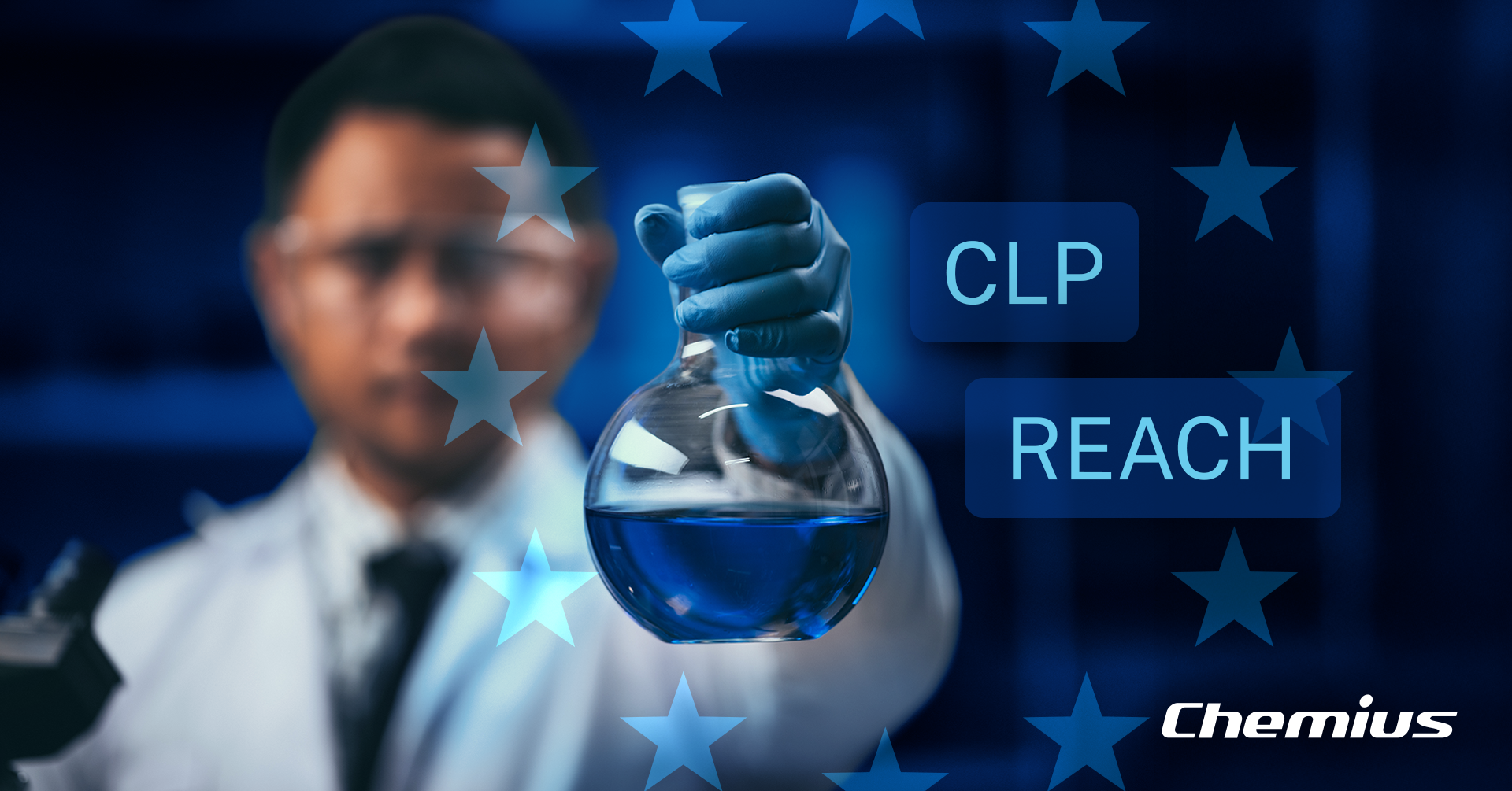11 Nov

Read today’s blog to understand the essential differences between CLP and REACH regulations and gain practical tips to ensure your chemical products remain compliant.
Chemical companies in sectors such as paints, coatings, aerosols, automotive products, raw materials, and chemical distribution must navigate complex regulatory landscapes. Two critical regulations in Europe—CLP (Classification, Labelling, and Packaging) and REACH (Registration, Evaluation, Authorisation, and Restriction of Chemicals)—often cause confusion due to their overlapping yet distinct compliance requirements.
This guide clearly outlines key differences between CLP and REACH, along with actionable strategies to ensure your products consistently meet compliance obligations.
Understanding CLP and REACH
What is CLP?
CLP is focused specifically on the classification, labeling, and packaging of substances and mixtures according to the Globally Harmonized System (GHS). It ensures clear communication of chemical hazards to workers and consumers.
What is REACH?
REACH is broader in scope, requiring companies to register substances with ECHA (European Chemicals Agency) and provide comprehensive safety data. It covers the lifecycle management of chemicals, addressing environmental and human health protection through rigorous evaluation and authorization processes.
Key Differences Between CLP and REACH

Scope and Objective
- CLP: Deals specifically with hazard classification, labeling, and packaging of chemicals.
- REACH: Encompasses chemical registration, evaluation, risk management, authorization, and restriction across the entire lifecycle.
Responsibilities
- CLP: Requires companies to classify substances and mixtures and provide clear labeling with standardized hazard information.
- REACH: Requires manufacturers and importers to register chemicals, providing detailed information on chemical safety, usage, and environmental impact.
Documentation Requirements
- CLP: Mandates labels and safety data sheets (SDS) with clear hazard statements, pictograms, and precautionary measures.
- REACH: Requires comprehensive registration dossiers submitted to ECHA, detailing chemical properties, usage scenarios, and exposure risks.
Compliance Enforcement
- CLP: Inspections focus on correct labeling, packaging, and accurate hazard communication.
- REACH: Inspections verify comprehensive documentation, registration accuracy, and proper management of restricted substances.
Practical Strategies for Compliance with CLP and REACH

Implement Centralized Compliance Management
Adopt advanced digital compliance tools to centralize CLP labeling and REACH registration documentation, reducing manual errors and enhancing regulatory accuracy.
Regular Training and Updates
Ensure your compliance teams stay informed about regulatory changes and new guidelines through consistent training and access to digital updates.
Proactive Regulatory Monitoring
Use digital compliance solutions to monitor changes in CLP classifications and REACH substance restrictions proactively, allowing immediate updates to product documentation.
Accurate and Timely Documentation
Regularly review and update labeling, SDS, and registration dossiers to reflect current product formulations, hazard classifications, and regulatory requirements.
Case Study: Effective CLP and REACH Management
A major automotive chemical supplier initially struggled with fragmented CLP and REACH compliance management, risking regulatory penalties. By centralizing their compliance documentation using an integrated digital platform, they successfully streamlined processes and significantly reduced compliance-related risks.
Impact:
- 50% reduction in compliance errors
- Enhanced accuracy of hazard communication
- Streamlined regulatory inspections

FAQs: Understanding CLP and REACH Compliance
1. Can a substance be regulated by both CLP and REACH simultaneously? Yes, substances typically require compliance with both regulations—CLP for hazard labeling and packaging, REACH for registration and lifecycle management.
2. Are Safety Data Sheets required under both CLP and REACH? Yes, SDS documents are crucial under both regulations—CLP for hazard communication and REACH for providing comprehensive safety information.
3. How often must companies update their REACH registration dossiers? Registration dossiers must be updated immediately when new safety or usage information becomes available or upon request from ECHA.
4. Can I create SDS and Label in Chemius as SDS Authoring software? Yes, you can create SDSs and labels in 40+ languages. Also you can create transportation documentations, safety instructions, TDS, PCN and UFI codes, among other features.
Comparative Summary: CLP vs. REACH

Chemius Insight: How to navigate CLP and REACH succesfully
Understanding the distinction between CLP and REACH is more than just a regulatory requirement — it’s a strategic advantage. Companies that clearly separate the two frameworks can manage compliance more efficiently, reduce unnecessary complexity, and keep their products moving across markets without interruption.
That’s where Chemius comes in. Its Regulatory Dashboard gives you a clear overview of your entire product portfolio, helping you pinpoint which products require REACH authorisation before it becomes a compliance risk. Instead of juggling spreadsheets or checking regulations manually, you have a single, transparent view of your compliance status at any moment.
Curious how this works in practice? Our YouTube tutorials walk you through real examples of how Chemius simplifies compliance management and turns what used to be administrative stress into an organised, automated process. 👉 Watch the tutorials here.
Ready to simplify your compliance journey?

Contact us at support@chemius.net to explore comprehensive solutions tailored for your CLP and REACH compliance needs.


